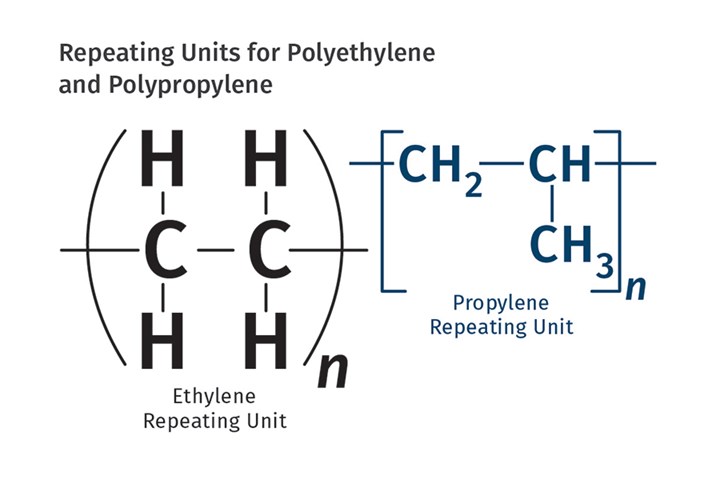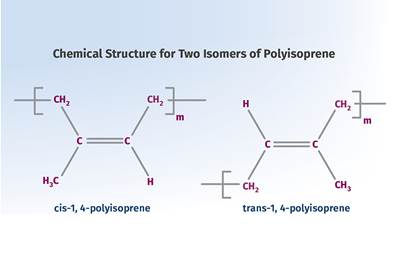Tracing the History of Polymeric Materials: Commodity Resins
How the ‘Big 4’ commodity materials — PE, PP, PS, PVC — came to be.
By the 1930s, the modern rubber industry was nearly 100 years old, celluloid had been commercially available for over half a century, and phenolic was a dominant force in a wide variety of industries. With few exceptions, all of the significant developments in polymer technology up to this point had been crosslinked systems, also known as thermosetting materials.
Today, the industry looks very different; thermoplastics are the dominant materials. Within this group, the four so-called commodities of polypropylene, polyethylene, polystyrene, and PVC account for most of the volume consumed worldwide. But the thermoplastic materials that can really compete with the elevated-temperature performance of crosslinked polymers and metals are materials like polyamides (nylons), polycarbonates, polysulfones and PEEK.
Mapping the historical development of the thermoplastic side of the ledger can be challenging because often the discovery of a material in the lab did not produce a rapid path to commercialization. Polystyrene was first discovered in 1839, but was not produced commercially until 1931 due to problems with controlling the exothermic reaction of polymerization. PVC was discovered in 1872. Attempts to use it commercially in the early 20th century were hampered by the limited thermal stability of the material. The temperature required to convert the material into a molten mass was higher than the temperature at which the polymer began to thermally decompose.
This was solved in 1926 by Waldo Semon at BF Goodrich. While attempting the dehydrohalogenate PVC in a high-boiling-point solvent to make a substance that would bond rubber to metal, he discovered that the solvent had plasticized the PVC. This lowered its softening temperature, opening up a window for melt processing.
Polyethylene was first created in the lab in 1898 by the German chemist Hans von Pechmann by decomposing diazomethane, a substance he had discovered four years earlier. But diazomethane is a toxic gas with explosive properties, so it would never have been a viable commercial option for large-scale manufacturing of a polymer that today is used in annual volumes that exceed 100 million metric tons (220 billion lb).
 Compared with PE, in the PP backbone each propylene unit contains three hydrogen atoms and a much larger methyl group.
Compared with PE, in the PP backbone each propylene unit contains three hydrogen atoms and a much larger methyl group.The material was rediscovered in 1933 by Eric Fawcett and Reginald Gibson, working at ICI in England. They were experimenting with placing various gases under high pressure. When they put a mixture of ethylene gas and benzaldehyde under immense pressure, they produced a white, waxy substance that today we know as low-density polyethylene. The reaction was at first difficult to reproduce, and it was not until two years later that another ICI chemist, Michael Perrin, developed controls that made the reaction reliable enough to lead to commercialization in 1939, more than 40 years after the polymer was first made.
These developments illustrate another example of multiple groups working independently on the same problems and developing solutions at nearly the same time.
High-density polyethylene was not synthesized until the introduction of new catalysts in the early 1950s. In 1951, J. Paul Hogan and Robert Banks, working at Phillips Petroleum, developed a chromium oxide-based system. The patents were filed in 1953 and the process was commercialized in 1957. The system is still referred to as the Phillips catalyst. In 1953 Karl Ziegler introduced a system using halides of titanium combined with organoaluminum compounds, and at about the same time an Italian chemist, Giulio Natta, made modifications to the Ziegler chemistry. Both of these systems allowed for a reduction in both the temperature and pressure needed to make the highly branched LDPE and produced a linear polymer that was significantly stronger, stiffer, and more heat resistant than LDPE.
These developments illustrate yet another example of multiple groups working independently on the same problems and developing solutions at nearly the same time. And as with previous instances we have covered, the inevitable result is a legal battle over who was first and is entitled to own the patents. In this case, it took until 1983 to settle the case in favor of the scientists at Phillips. However, because Ziegler and Natta published their findings in the scientific journals first, they were awarded the Nobel Prize for their work two decades earlier in 1963.
The new catalysts also made possible the production of commercially useful versions of the fourth member of the commodity family, polypropylene. Polypropylene had actually been produced by Fawcett and Gibson in the mid-1930s. After their successful experiments with polyethylene, they naturally expanded their work to include other gases of similar chemistry. But their results with polypropylene were disappointing. Rather than yielding a material that was solid at room temperature and exhibited useful mechanical properties, the reaction yielded a sticky mass that was only useful as an adhesive. Fawcett and Gibson had produced what would later be known as atactic polypropylene.
The discovery of all four of these materials, as well as the refinements that led to their commercialization, were accidental.
Unlike polyethylene, where all the pendant groups attached to the carbon backbone are hydrogen atoms, each propylene unit in the polypropylene backbone contains three hydrogen atoms and a much larger methyl group, as illustrated here. In atactic polypropylene the methyl group can appear in any one of the four possible positions within the repeating unit, preventing the material from crystallizing. The new catalysts created a structure where the methyl group is located in the same position in each repeating unit.
This structural regularity resulted in a material that was capable of crystallizing, and the patents make reference to crystalline polypropylene. This crystalline form of polypropylene had strength, stiffness, and a melting point even higher than those of HDPE, and with this one rapid development, two materials that account for more than 50% of the world’s annual polymer production were created. Interestingly, it was Giulio Natta’s wife, Rosita Beati, a non-chemist, who coined the terms atactic, isotactic, and syndiotactic to describe the different structures that could be created when polymerizing polypropylene. Today we use these terms to refer generally to the isomeric structures that can be formed when polymers are produced using various types of catalysts.
It is interesting to note that the discovery of all four of these materials, as well as the refinements that led to their commercialization, were accidental. We will see as we follow this story that this was also the case for many other materials that we use today. But concurrent with all of this activity, development on the chemistry that Hyatt started in the 1850s was continuing, and would produce other important developments.
These developments would not result in the high volumes we associate with the four big commodity polymers, but they would solve some pressing problems and they would capitalize on a chemistry that today we would refer to as a biopolymer, bringing us full circle with the current efforts to create the sustainable economy. These developments will be the topic of our next installment.
ABOUT THE AUTHOR: Michael Sepe is an independent materials and processing consultant based in Sedona, Ariz., with clients throughout North America, Europe, and Asia. He has more than 45 years of experience in the plastics industry and assists clients with material selection, designing for manufacturability, process optimization, troubleshooting, and failure analysis. Contact: (928) 203-0408 •mike@thematerialanalyst.com
Related Content
Three Key Decisions for an Optimal Ejection System
When determining the best ejection option for a tool, molders must consider the ejector’s surface area, location and style.
Read MoreThe Fundamentals of Polyethylene – Part 2: Density and Molecular Weight
PE properties can be adjusted either by changing the molecular weight or by altering the density. While this increases the possible combinations of properties, it also requires that the specification for the material be precise.
Read MoreBack to Basics on Mold Venting (Part 1)
Here’s what you need to know to improve the quality of your parts and to protect your molds.
Read MoreWhere and How to Vent Injection Molds: Part 3
Questioning several “rules of thumb” about venting injection molds.
Read MoreRead Next
Tracing the History of Polymeric Materials: Celluloid
In this series we’ll delve into a discerning look back into the history of our industry and how we all got here.
Read MoreTracing the History of Polymeric Materials: Celluloid & Film Stock
In this series we delve into a discerning look back into the history of our industry and how we all got here.
Read More
.jpg;width=70;height=70;mode=crop)



















